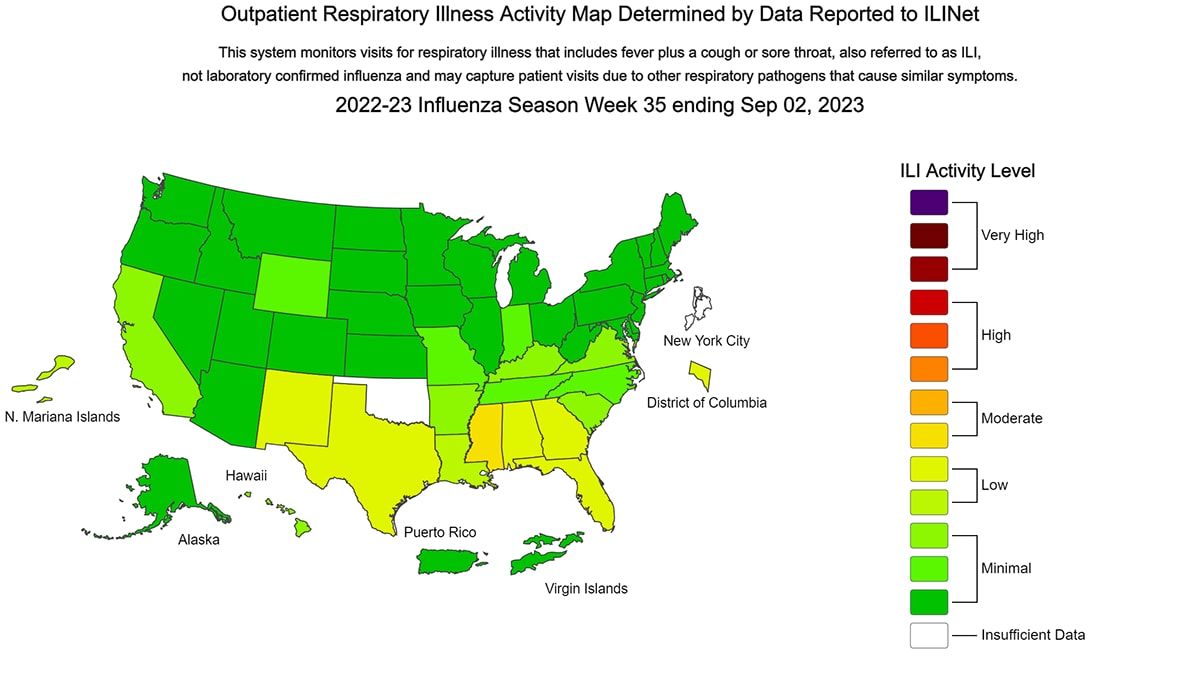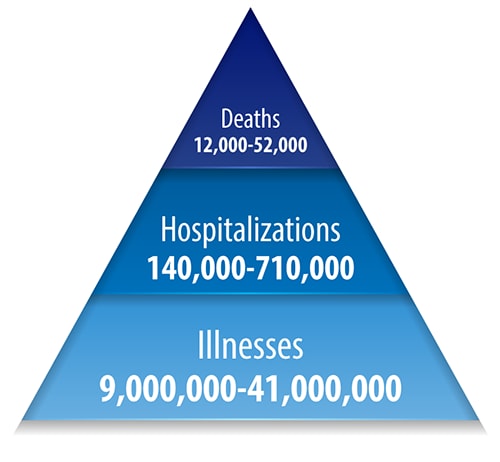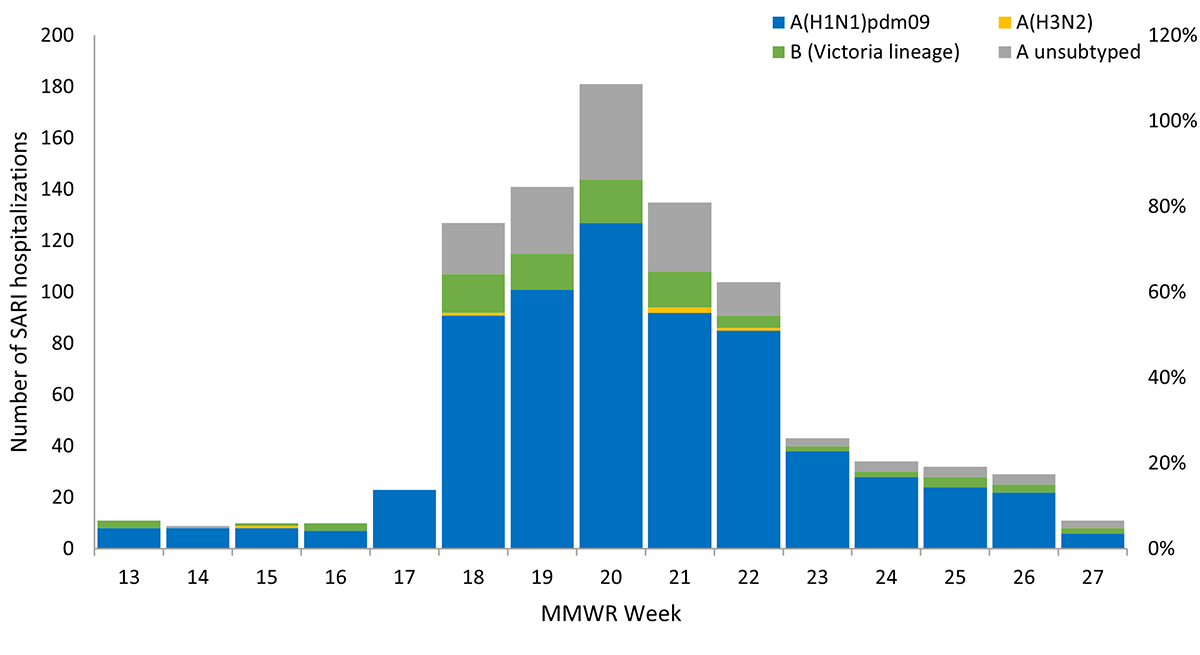#17,665
Although we are only in the second week of September, already we are seeing an uptick in respiratory diseases - particularly in the southern tier of states - caused by a combination of COVID, RSV (see CDC HAN On Increased RSV Activity), and influenza.
Since the arrival of COVID in early 2020, we've seen shifting patterns in respiratory disease outbreaks around the world. While the 2023-2024 flu season doesn't begin until October - in mid-August the CDC began producing a weekly Respiratory Virus update - which began with a report on BA.2.86.
Yesterday, the CDC posted two updates; a third report on BA.2.86, and a report on the effectiveness of the flu vaccine in the Southern Hemisphere's flu season which has recently ended.
The first of two reports, after which I'll have a brief postscript.
What We Can Learn from Flu in the Southern Hemisphere
September 8, 2023, 5:30 PM EDT
CDC is posting updates on respiratory viruses every week; for the latest information, please visit CDC Respiratory Virus Updates.
Activity for respiratory viruses like the flu is currently low across most of the United States.

The level of flu activity can vary from year to year. In past years, the flu has caused millions of people in the United States to get sick, with hundreds of thousands of hospitalizations and tens of thousands of deaths.

CDC expects flu activity in the United States to increase in the coming weeks. Flu in the Northern Hemisphere is often caused by viruses similar to those that spread in the Southern Hemisphere during their winter flu season.
This year’s Southern Hemisphere flu season had an earlier peak during April to May, compared to typical peaks in June to July. Of the specimens that tested positive for Influenza, approximately 90% of the viruses were Influenza Type A and 10% were Influenza Type B. What happens in the Southern Hemisphere does not necessarily predict what will happen in the Northern Hemisphere. This is because different flu viruses may spread more commonly in different parts of the world and immunity may vary between populations.

The U.S. 2023-2024 flu vaccines have a similar vaccine virus composition as the 2023 Southern Hemisphere flu vaccines. A new CDC study, which looked at children and adults in five South American countries during the 2023 winter flu season (our summertime), shows flu vaccine performed well against those viruses. This study found that people who had received a flu vaccine were half as likely to be hospitalized with flu compared to people who had not been vaccinated. This finding shows that flu vaccine provides protection against serious outcomes.
This season’s U.S. flu vaccines could provide similar benefit against serious flu outcomes during the upcoming season if the same viruses continue to spread here.
Last flu season started early in the U.S., with activity increasing nationally at the beginning of October 2022 and peaking in early-December 2022, causing an estimated 27 million illnesses and 300,000 hospitalizations. To prepare for this flu season, Americans should begin getting vaccinated against flu, and ideally, be vaccinated before the end of October. Check vaccines.gov to find a flu vaccine near you.
Learn more about flu in the Southern Hemisphere.
The second report is a brief update on BA.2.86.
Update on SARS CoV-2 Variant BA.2.86
September 8, 2023, 11:30 AM EDT
CDC is posting updates on respiratory viruses every week; for the latest information, please visit CDC Respiratory Virus Updates.
CDC is tracking a SARS-CoV-2 variant called BA.2.86 and working to better understand its potential impact on public health. This update follows CDC’s previous BA.2.86 updates on August 23, 2023 and on August 30,2023.
It is anticipated that the 2023-2024 COVID-19 vaccine will be available in mid-September. Learn more about ways to keep you and your loved ones safe as we head into the fall respiratory virus season.
What’s New?
- The current increases in COVID-19 cases and hospitalizations in the United States are not being driven by BA.2.86 and instead are being caused by other predominantly circulating viruses.
- Early research data from multiple labs are reassuring and show that existing antibodies work against the new BA.2.86 variant. These data are also encouraging because of what it may mean for the effectiveness of the 2023-2024 COVID-19 vaccine, which is currently under review. That’s because the vaccine is tailored to the currently circulating variants.
- Since CDC’s initial risk assessment, BA.2.86 has been identified in additional countries from both human and wastewater specimens. The variant has been identified in nine U.S. states as of September 8, 2023, at 11:30 AM EDT— in people across Colorado, Delaware, Michigan, Ohio, Pennsylvania, Virginia, and Washington, as well as one additional human case that is being investigated. The variant has also been identified in wastewater samples in two states, New York and Ohio.
- The U.S. SARS-CoV-2 Interagency Group (SIG) classified BA.2.86 as a Variant being Monitored (VBM) on September 1, 2023.
Recent Scientific Findings on the Immunology of BA.2.86
Because of the sequence divergence of BA.2.86, there was initial concern of a significant reduction in antibody activity. Preliminary data from laboratory-studies from multiple investigators suggest similar antibody activity against BA.2.86 as compared to other currently circulating viruses.
CDC and other experts are reassured by these research findings that support the effectiveness of this type of immunity against this variant. Additionally, based on CDC’s experience with past SARS-CoV-2 variants, people will likely have protection against severe disease mediated by both cellular and antibody immunity. Real-world data are needed to fully understand the impact given the complexities of the immune response to this variant. Additional studies on this are ongoing, and we expect to learn more in upcoming weeks.
The remainder of CDC’s risk assessment remains unchanged from last week’s (August 30th) update.
Long COVID continues to exact a heavy toll, and repeated infections seem to increase both its incidence and its severity (see Nature: Acute and Postacute Sequelae Associated with SARS-CoV-2 Reinfection).
Despite recent `reassuring' reports on BA.2.86, we could still be facing a daunting fall and winter respiratory season. Fortunately, we have many tools (vaccines, face masks, hand sanitizers, etc.) that can help reduce the risks.
Individually, they may offer us less protection than we'd like.
But when used together, and consistently, they can make a real difference.

